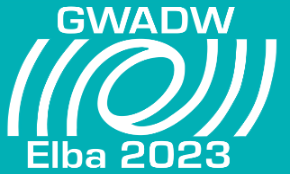Speaker
Description
The development of amorphous thin films (mirror coatings) with low internal friction is one of the crucial steps for developing gravitational wave interferometric detectors with enhanced sensitivity. Currently operating mirrors are made of alternating thin layers of low refractive index amorphous silica (a-SiO$_2$) and high refractive index titania-doped tantala (TiO$_2$:Ta$_2$O$_5$) to achieve optical films of the highest quality.
Within this contribution we report on recent x-rays investigations of amorphous silica thin films prepared by Ion Beam Sputtering annealed at different annealing temperature up to 1000 °C. X-ray Absorption Spectroscopy spectra at the Si K-edge have been measured in order to monitor the effect of thermal treatment on the microscopic structure.
Analysis revealed changes of medium range order between 700-800 °C. Crystallization does not occur up to the highest annealing temperature, as revealed by X-ray Diffraction while the density was found to decrease (XRR). In addition, Fourier Transform Infrared spectroscopy allows to correlate the structural information obtained by x-rays techniques with vibrational modes related to the short and medium range order.
The overall results of these studies can contribute to establishing the correlation between macroscopic properties such as mechanical losses and structural changes at the atomic level induced by thermal treatment.

